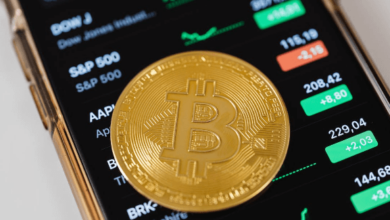Hard fork vs soft fork
If your bank’s app asks you to install an update on your smartphone, you probably won’t give it a second thought. It is also likely that you may have set up auto-updates and the app gets updated without seeking a response from you. This is a step that you cannot miss because with the older versions you would not be able to access all the latest features and functions. Read more
The operations in an open-source cryptocurrency are remarkably different from this. Now, it is not necessary to read each and every line of code that is used to keep the Bitcoin system running but if you want to, you should be able to access that information. With the absence of a hierarchy and a central point of contact, implementing new updates on a blockchain technology network can get very challenging.
What is a fork?
Blockchain is a decentralized open-source software. Cryptocurrencies like Bitcoin and Ethereum carry out their functions on a blockchain network. A fork refers to a change that takes place in the blockchain’s underlying protocol. A blockchain fork is like an update in the network that may be major or minor. It could be led by the users in the blockchain community or by its developers. The updated version of the protocol needs to be updated across the blockchain. This is done by node operators, i.e machines or computers that check and verify transactions. Each system or node has a copy of the blockchain. It makes sure that the new transactions are well aligned with the history of the blockchain.
Read more: Crypto Payment Gateways: All you Need to Know
A hard fork would be a major update that could either validate all the past transactions and data blocks or it could invalidate all of them at once. All network validators must have the latest version of the blockchain once a hard fork is introduced. Unlike soft fork, it is not backward compatible. A soft fork on the other hand upgrades the software but does not necessarily demand a new version. It is backward compatible and makes validators on the older version view the new version as a valid one.
Hence a hard fork often drives a permanent separation from the main blockchain as the old and the new version cannot be synced even though they have the same history. On the basis of this history, those who hold tokens for the old version are given new tokens for the fork.
There are many reasons why a hard fork may occur.
Hard fork
If one looks at the blockchain structure, it is simply a chain of data blocks that operate together as a shared digital ledger. Every new block is validated once it has been confirmed by the last block and with this, it is possible to go really deep into the blockchain’s origin and reach the first data block.
A hard fork indicates a permanent shift from the blockchain’s last version and as a result, it separates from the blockchain. This happens because certain nodes don’t reach a consensus and thus, different versions of the blockchain run parallel.
What basically leads to the creation of a fork is that one path of the blockchain continues to move with the old set of rules while another follows new rules. As a hard fork is not compatible with the older blocks of data, it does not see the new version of the blockchain as a valid addition. Hard forks can be tricky as they lead to chain splits. When a split happens between the miners and the nodes, the network could be more prone to attacks.
How does this affect an investor? Let’s assume that you owned five Bitcoin tokens when a fork occurred on the 600,000 blocks. Now, you may spend the tokens in the old blockchain in the subsequent block but the same transaction will not be replicated in the new fork. Typically, the cryptography does not change and thus, your private keys would still have five coins in the forked network.
Soft fork
A soft fork is not as rigid as a hard fork. This upgrade is entirely backward-compatible, meaning that the old and the new nodes can still interact with one another. When a soft fork occurs, new rules are added to the blockchain. However, they do not lead onto another path and are still in sync with the old rules. For instance, in the case of Bitcoin, you cannot increase the size of the data blocks because the rules say so but there is no rule that indicates that you cannot decrease the size. If the size decreases, it would be considered a soft fork. It will not affect the communication between nodes and the new block will still be a part of the existing blockchain.
SegWit fork, which is short for Segregated Witness fork, followed the forking of Bitcoin Cash. SegWit led to a change in the format of the blocks as well as their transactions. The nodes were unable to understand the fork but it did not impact the validity of these transactions. Some information fields could be viewed when nodes moved to the latest software that allowed them to process additional data.
Also Read: https://vertcs.com/how-will-blockchain-transform-work-fun-and-health-in-the-future/
Hard fork vs soft fork
Hard forks do not have a monopoly when it comes to upgrading the software that runs cryptocurrencies. Since older blocks of data continue to view the chain as valid, a soft fork is generally considered safer. The fact that it is backward-compatible makes it a great blockchain technology since it allows new features and functions to be created without making any changes to the existing set of rules. Soft forks are useful when new features need to be added at the programming level.
To make it more comprehensive, soft forks and hard forks can be seen as operating system upgrades that happen on a mobile phone or on a laptop. When it’s a soft fork, the device still works with the new changes but when it is a hard fork, the device needs entirely new software to keep functioning.




